Meet the Brilliantly Colored Buff-Bellied Hummingbird
Updated: Dec. 19, 2023
Buff-bellied hummingbirds shimmer in southern Texas. Find out what they look like, what foods they eat, and where they build their nests.
On This Page
What Does a Buff-Bellied Hummingbird Look Like?
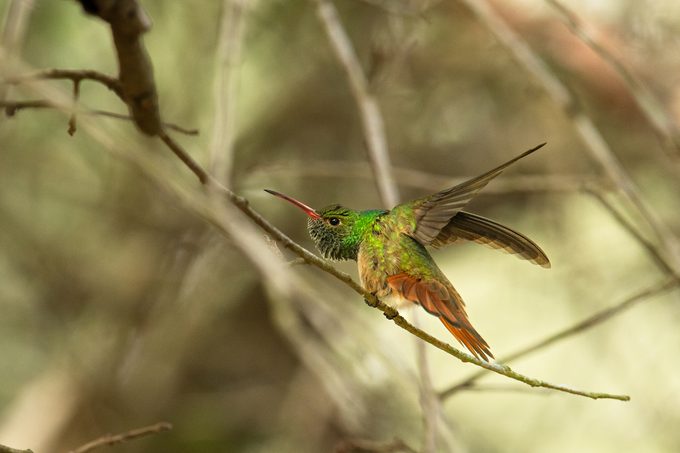
It’s easy to tell if you’re looking at a buff-bellied hummingbird; there isn’t any other hummingbird in the United States that resembles it. Trademark buff-bellied traits include a red bill with a black tip, shimmery green feathers along the back, a brown breast and reddish brown tail feathers. “It’s similar in size to a ruby-throat,” explains Dr. Keith Arnold, ornithologist and professor emeritus at Texas A&M University.
Since their plumage is very similar, females and males are difficult to tell apart. Regardless of gender, they tend to chase away other hummingbirds that stop by their favorite food sources.
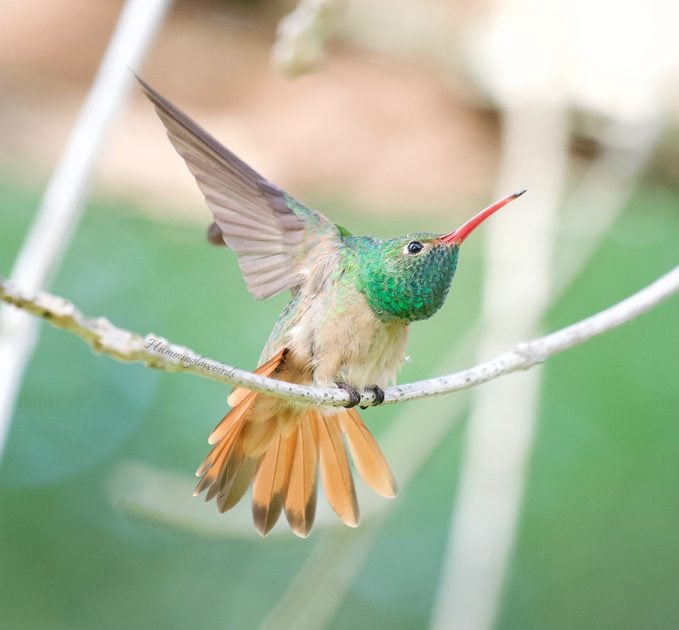
“This is a buff-bellied hummingbird (above). The moment when I first noticed the species almost a decade ago now was what got me into hummingbirds and birding, and now I travel all over the world just to get a glimpse of different species. The tail fan is what I wait for, with all those pretty rufous/orange colors,” says Birds & Blooms reader Emily Zamora.
Learn how to identify a a rufous hummingbird.
Range and Habitat
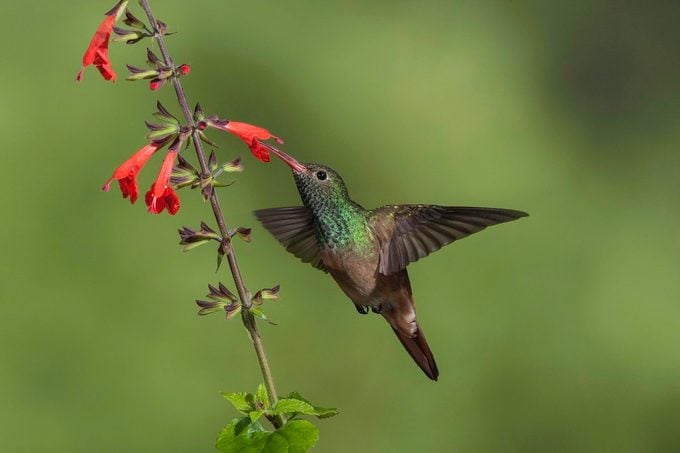
Head to the Lone Star State if you’d like to find a buff-bellied hummingbird in the U.S. The southern point of Texas is the only place in the country where you’ll be able to find them during the breeding season. But there’s more good news for Texas birders—this hummingbird lives there year-round. Occasionally, these hummers extend their range along the Gulf coast of Texas and into southern Louisiana after the breeding season ends.
Buff-bellied hummingbirds have a variety of habitats. You might spot them in brushy fields or around the woods, or you might add one to your life list after seeing it in suburban gardens or a local park.
“I live and work in Deep South Texas, down near the U.S./Mexico border. A friend of mine invited me to photograph buff-bellied hummingbirds (above) with him a while back during the winter. Both the time and the results were wonderful!” says reader Ruth Hoyt.
Discover the amazing Lower Rio Grande Valley birds.
What Does a Buff-Bellied Hummingbird Eat?
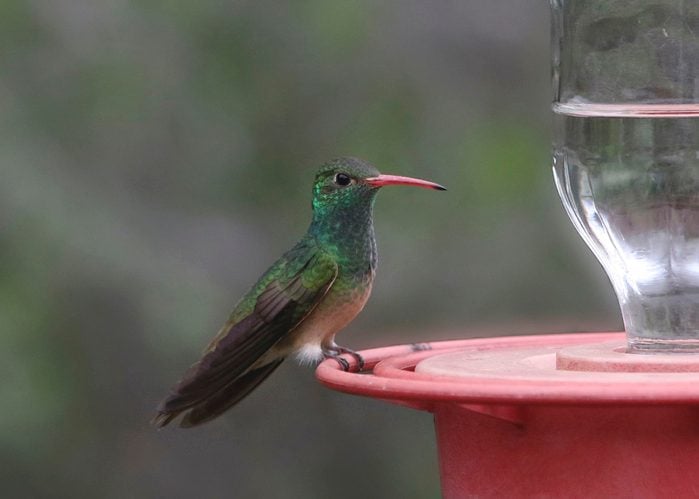
“Like all hummingbirds, they feed on nectar and insects,” Keith says of buff-bellied hummingbirds. He recommends bee balm, salvia, and honeysuckle for gardeners looking to bring these birds into their yard. “Salvia is one of the best ones,” he notes.
In addition, buff-bellied hummingbirds visit to hummingbird feeders. “They use them, and in fact, they’ll fight over them!” Keith says. To keep your yard conflict-free, he recommends putting up more than one feeder, and placing them 10 to 15 feet apart. “The answer to dispersing is putting up more feeders at distances where they can no longer control the food source,” he says, also reminding birders not to use red dye.
Learn how to attract hummingbirds with 10 expert tips.
Buff-Bellied Hummingbird Nest
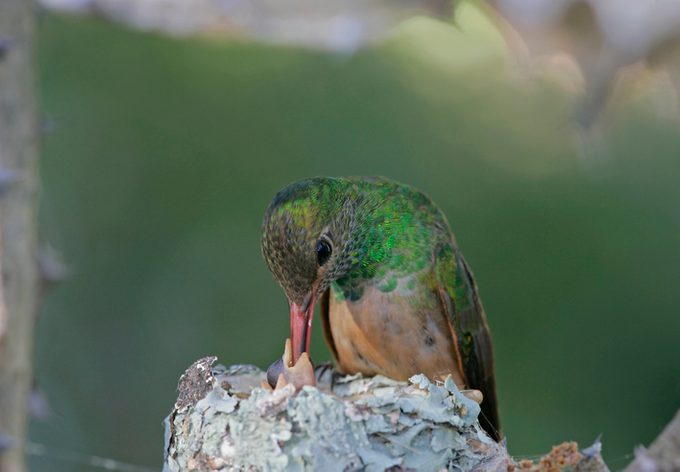
Buff-bellied hummingbirds generally build nests in a few favorite species of trees, including hackberry, pecan, ash and Texas ebony. They’ll position the nest in the fork of the tree.
Like other female hummingbirds, buff-bellieds lay two eggs per brood and do all the work of nest-building and raising the babies alone—making them the ultimate bird supermoms.




















